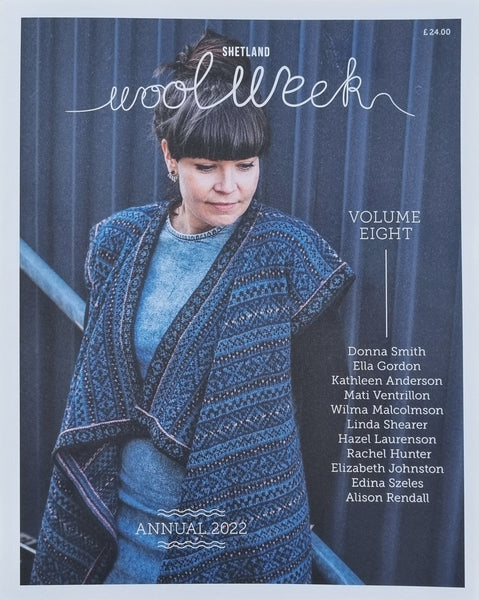-
Footer menu
Uradale Yarns
Shaetlan. A young language wi aald røts
£34.00
Uradale Yarns
Shaetlan. A young language wi aald røts
£34.00
Shaetlan. A young language wi aald røts
By Viveka Velupillai & Roy Mullay
1st edn. 2025
This book is a typologically orientated description and grammar of Shaetlan, using a typological linguistic framework and structure for the grammar. It is written to be accessible for the general public and especially for the Shaetlan mother tongue speakers, but in such a way that it will also be useful for the linguistic community. The book is bilingual in Shaetlan and English, except for the introductory contributions by seven mother tongue speakers of Shaetlan, which appear in Shaetlan only. The international endorsements for this book are given below.
Landscapes & their vital role in food productionThis is the first typological grammar of Shaetlan, a remarkable mixed language spoken by a resilient bilingual community. The work follows the best scholarly practices in analytic and typologically-oriented description, and puts the language on the map. The grammar is based on close collaboration with mother-tongue speakers as co-authors. It is entertaining and will be accessible to a varied selection of audiences.
(Prof. Dr. A.Y. Aikhenvald, CQUniversity Australia)
Shaetlan: A young language wi aald røts is the best language book I have ever read. Its scholarliness, depth and datelines on the one hand, and accessibility, simplicity and clarity on the other, make this bilingual community-based publication invaluable for linguists, language learners and local and global language-rights activists.
(Dr. Alexander Andrason, University of Cape Town & Living Tongues Institute for Endangered Languages)
‘Shaetlan’ changes the conversation about the language that it describes. Moving quickly beyond the argument that Shaetlan is a “kind” of English or Scots or Norn, the authors definitively establish that it deserves to be discussed as a language in its own right, with its own grammar and phonology, that has interacted in complex ways with all of the above. The authors of this book make the startlingly effective decision to write it in both English and Shaetlan, and it is in fact the ability to read about Shaetlan in Shaetlan that best establishes for the reader that this is a distinct language, most closely allied to Scandinavian languages in its structure and to Scots in its vocabulary. The attention paid to variation within Shaetlan is particularly well-done, and gives a clear sense of a community well aware of the distinctness of its speech and the systematic ways that it differs from the prestige language around it. This book changed how I see Shetland and its language, and I enjoyed the opportunity it presented of learning to read Shaetlan by exposure, too.
(Dr. Jackson W. Crawford, https://jacksonwcrawford.com/)
This book is nothing short of transformative—a shining example of inclusive linguistics at its finest. Written bilingually and co-authored with members of the Shaetlan-speaking community, it is rigorously grounded in sound linguistic science, yet it remains accessible to non-specialists, welcoming both academics and lay readers alike into the richness of the Shaetlan language. Shaetlan is recognized and respected internationally, and this book is already used in university classrooms as a model for language documentation, description, maintenance, and activism. Shaetlan is not just a language of local significance—it is a language of global importance. This is a book that will inspire scholars, students and activists alike—and it is one I will return to again and again.
(Prof. Dr. Michel DeGraff, MIT Boston)
This groundbreaking bilingual grammar brings Shaetlan, a typologically unusual contact language, to the attention of linguists and language enthusiasts worldwide. It follows the best scientific practices of typological linguistics in using solid data and up to date analytical methods. Grounded in a close collaboration between linguists and mother tongue speakers, this highly readable and accessible book opens new horizons in language studies.
(Prof. Dr. R.M.W Dixon, CQUniversity Australia)
This vigorous and splendidly-illustrated book is in Shaetlan and about Shaetlan, and uses it – thanks to the native speakers who have contributed – to demonstrate the structure, the skilfulness and the spirit of this remarkable language. Grammar, and much more, written with verve and passion!
(Prof. Dr. Anthony P. Grant, Edge Hill University)
This bilingual grammar shows the unique history, status and linguistic characteristics of the Shaetlan language. The study is firmly rooted in the most up-to-date theoretical frameworks and analytical methodologies, yet written to be both accessible and entertaining for the general public.
(Prof. Dr. Merja Kytö, Uppsala University)
Viveka Velupillai and Roy Mullay with their co-authors have provided an invaluable resource for their community in Shetland and for a wider readership interested in issues of linguistic and cultural diversity. Shetlanders are particularly indebted to the authors in that they have produced a book of the highest academic standards which is accessible to a non-specialist audience. It is obvious from the foregrounding of the co-authors’ mother-tongue narratives that the first-language Shaetlan community is book’s primary audience. This bilingual publication combines linguistic description, anthropological and biographical testimony and a rationale for sustaining Shaetlan as a differentiated language. The detailed description of Shaetlan as a mixed language, rooted in historical and sociological context, serves as the most compelling and coherent appeal to date for languagehood recognition for Shaetlan. The readers of this volume will conclude that this is long overdue.
(Prof. Dr. Conchúr Ó Giollagáin, The University of the Highlands and Islands)
Velupillai & Mullay’s meticulous work finally establishes Shaetlan as a distinct language with its own legitimate place in the North Atlantic. It presents irrefutable evidence that Shaetlan deserves full recognition and support as a viable medium for education and public affairs. An essential, paradigm-shifting contribution that will resonate far beyond Scotland’s northern isles.
(Prof. Dr. Kofi Yakpo, The University of Hong Kong)
Postage & packing is calculated based on the total weight of your order at checkout and the rates according to the Royal Mail zones of UK (Royal Mail 1st Class), Europe Zones 1-3 (Royal Mail International Tracked), and World Zones 1-3 (Royal Mail International Tracked).






